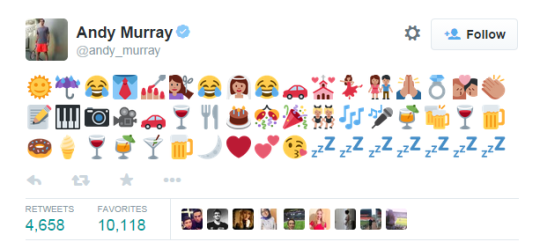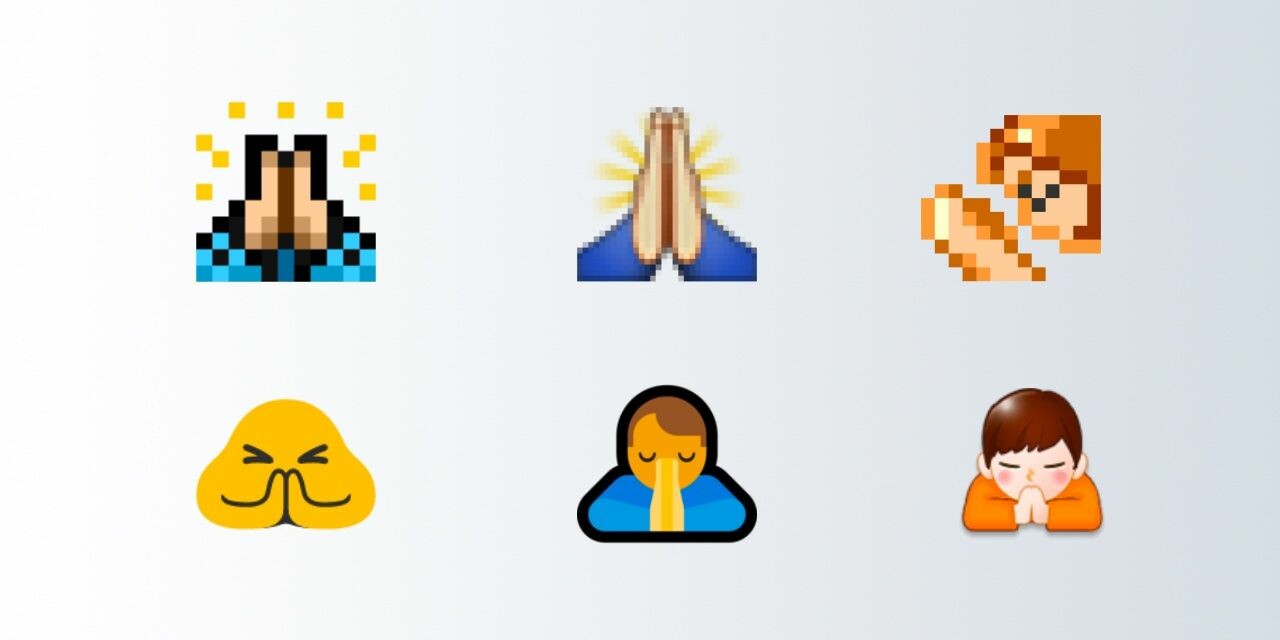Emojis easily transcend language – a simple smiley face is easily interpreted as happiness regardless of where you are in the world. Over 36% of millennials use emojis daily, with the number set to steadily rise. In 2015, tennis star Andy Murray tweeted about his wedding entirely using emojis, telling the world about the weather, festivities and dancing and even hints at the possibility of a doughnut and ice cream(?) feast.

(Source: Andy Murray reports on wedding day in one tweet)
However, despite emojis being so universal and understandable, roles like Keith Broni’s still exist. As an Emoji translator and reviewer, his opinion is that Emojis complement rather than replace language. As we explain in our Social Expressions e-book, this statement proves to be very true. The “flame” ? emoji can simultaneously be seen as someone being roasted or insulted as well as being “lit” or cool.
Another emoji surrounded by its own mysticism is the “prayer hands”?? emoji, facing the rampant rumour of it being a “high-five” since the mid 2013s. This has no doubt been a cause of much confusion in many condolence messages such as the ones below.

However when we see the “prayer hands” emoji across different platforms the intentions are much more clear, they are meant as a gesture of prayer (religious or secular) or as a sign of thanks. Mystery solved!

(Source: Emojipedia Folded Hands)
On a more serious note, emojis have caused their fair share of misunderstandings. An employee in China was swiftly fired by her manager after using the “OK” emoji as a reply. The latter had seen the lack of a text reply as extremely rude and was quoted saying “You should use text to reply to the message if you have received it. Don’t you know the rules?”. It is undeniably easy to misinterpret emojis or have different levels of emotion attached to each one.
Even though Emojis having a long way to go before they become the world’s language, it’s safe to say – especially with the “Face with Tears of Joy” ? emoji’s entrance into Oxford Dictionary’s 2015 Word of the Year – Emojis are here to stay and have definitely found a place in our everyday life.
 Do you agree? Take a look at our Social Expressions e-book for more information on how brands can leverage emojis for marketing campaigns.
Do you agree? Take a look at our Social Expressions e-book for more information on how brands can leverage emojis for marketing campaigns.



